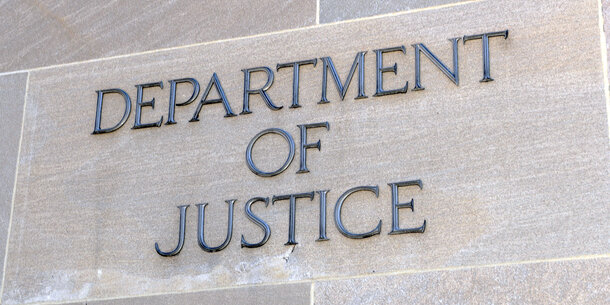Written Testimony Submitted to the Assembly Standing Committee on Labor at the Hearing on Addressing Workforce Shortages
The Brennan Center for Justice at New York University School of Law welcomes the chance to testify regarding barriers to workforce participation faced by the millions of New Yorkers with a criminal record. The Center’s cutting-edge research demonstrates that mass incarceration negatively impacts the wellbeing of the state’s economy and workforce. It also points to the need for innovative policy solutions to overcome these challenges, such as legislation to automatically “seal” conviction histories. We thank the Committee for the chance to discuss this vital but underappreciated dimension of labor policy.
Employment rebounded in New York State and New York City over the past year.[1] But several industries continue to experience major gaps in the workforce. For example, New York City has yet to recover from pandemic-related job losses in the hospitality and retail sectors.[2] Statewide data tells a similar story, with delivery, healthcare, and service listed as sectors in need of talent.[3]
No single factor accounts for these labor shortages. Undoubtedly the lingering effects of the pandemic and other structural imbalances in the economy offer partial explanations. But the side-effects (or “collateral consequences”) of criminal convictions and imprisonment may be another contributing factor.[4] Legal barriers and social stigma regularly prevent people with a criminal record from participating fully in the economy, blocking them from competitive jobs and housing, among other things.[5] As a result, people with a criminal record tend to be pushed into jobs with low pay and few benefits.[6] The individual costs are profound: the Brennan Center’s analyses show that even a minor criminal record may reduce annual earnings by 16 percent.[7] And they add up. New research by a team of sociologists shows that as a state’s share of adults with a felony record rises, so does the working-age non-employment rate.[8]
New York State is far from immune to these pressures. While previous estimates place the number of New Yorkers with a criminal conviction at 2.3 million, the real figure could be nearly three times as high.[9] And in 2020 alone, more than 18,000 New Yorkers left one of the state’s prisons or parole facilities.[10] Many if not most of these people face barriers to employment and basic necessities, with consequences that extend to our communities and the State as a whole. According to the Center’s research, reduced annual earnings attributable to unemployment and under-employment among New Yorkers with a prison record alone may add up to $1.9 billion.[11]
The legislature should work to reduce these hardships and help people with a criminal record re-enter the workforce. One promising idea is to allow a criminal conviction to fall off someone’s record after they have been released from incarceration and abstained from crime for several years. “Sealing” criminal records has been shown to boost earnings and employment among people with a criminal history.[12] Unfortunately, New York’s sealing process requires people to apply for relief, and has proved complicated and time consuming. Fewer than one percent of those eligible have successfully sealed a record under the petition-based sealing statute.[13]
A better option would be to automate the process for sealing records, easing the transition back into the workforce for people with a criminal record and seamlessly removing some of the collateral consequences of conviction. This is the approach favored by a growing number of states — and by last session’s Clean Slate Act, A. 6399C, which the Center endorsed at the time and continues to support.[14] That bill would have sealed most misdemeanor records after three years and most felony records after seven years. These timelines would have begun only after release from incarceration (where relevant), and automatically restarted if someone committed a new crime during the waiting period. Critically, a sealed record could not be held against someone in an application for housing, licensing, or employment — sharply limiting the stigma of a criminal conviction in these competitive markets.[15] But it would have preserved the records for sensitive matters such as firearm licensing and subsequent sentencings.[16] In doing so, the bill struck an important balance between public safety and expanding access to the State economy.
Automatic record sealing would not remove every barrier to employment faced by New Yorkers with a criminal record. But it would, according to a new analysis, remove those records as a barrier to employment for as many as 1.4 million people across the State — and help draw down the estimated $7.1 billion in reduced earnings this group faces every year.[17] The Clean Slate Act would open a world of opportunity for these workers, expand the State’s labor pool and, in the process, reduce both income inequality and the racial wealth gap.[18] We strongly urge the Assembly to take up this legislation again in the coming session and pass it at the earliest opportunity, as a matter of both economic justice and workforce development.
* * * * *
New York State cannot afford to leave any workers behind. The Brennan Center urges the Legislature to reintroduce and pass the Clean Slate Act, expanding at a stroke the state’s labor force and generating new economic opportunities for people with a criminal record.
Endnotes
[1] “Current Employment Statistics,” New York State Department of Labor, accessed November 18, 2022, https://dol.ny.gov/current-employment-statistics-0 (indicating a rebound in state employment).
[2] Nicole Hong and Matthew Haag, “In New York City, Pandemic Job Losses Linger,” New York Times, September 14, 2022, https://www.nytimes.com/2022/09/14/nyregion/nyc-covid-job-losses.html.
[3] “Jobs in Demand Today,” New York State Department of Labor, accessed November 18, 2022, https://dol.ny.gov/jobs-demand-today.
[4] For background on mass incarceration and its legacy, see Jeremy Travis and Bruce Western, “The Era of Punitive Excess,” Brennan Center for Justice, April 13, 2021, https://www.brennancenter.org/our-work/analysis-opinion/era-punitive-excess.
[5] For a brief discussion of how a criminal record can negatively impact economic wellbeing, see Terry-Ann Craigie, Ames Grawert, and Cameron Kimble, Conviction, Imprisonment, and Lost Earnings: How Involvement with the Criminal Justice System Deepens Inequality, Brennan Center for Justice, 2020, 13, https://www.brennancenter.org/sites/default/files/2020–09/EconomicImpactReport_pdf.pdf. See also Cameron Kimble and Ames Grawert, “Collateral Consequences and the Enduring Nature of Punishment,” Brennan Center for Justice, June 21, 2021, https://www.brennancenter.org/our-work/analysis-opinion/collateral-consequences-and-enduring-nature-punishment.
[6] Leah Wang and Wanda Bertram, “New Data on Formerly Incarcerated People’s Employment Reveal Labor Market Injustices,” Prison Policy Initiative, February 8, 2022, https://www.prisonpolicy.org/blog/2022/02/08/employment/.
[7] Craigie et al, Conviction, Imprisonment, and Lost Earnings, 2020, 14–15. These conclusions are in line with other research, some of which also documents high unemployment among formerly imprisoned people. Seeid., 25–26.
[8] Ryan Larson et al., “Felon History and Change in U.S. Employment Rates,” Social Science Research 103 (2022): 10–12, https://pubmed.ncbi.nlm.nih.gov/35183305/.
[9] A state press release from 2016, which we have previously relied upon, stated that 2.3 million New Yorkers have a criminal conviction. See Gov. Andrew M. Cuomo, “Governor Cuomo Announces First in the Nation Regulation to Prohibit Insurance Companies from Denying Coverage to Businesses Seeking to Hire Formerly Incarcerated New Yorkers,” December 21, 2016, https://fortunesociety.org/media_center/governor-cuomo-announces-first-in-the-nation-regulation-to-prohibit-insurance-companies-from-denying-coverage-to-businesses-seeking-to-hire-formerly-incarcerated-new-yorkers/ (copy of since-deleted content). Newer estimates based on combining data on criminal record prevalence suggests a much higher number: 4.2 to 6.3 million. See Colleen Chien et al., The Estimated Size and Lost Earnings of New York’s Second Chance Sealing Gap, Paper Prisons Initiative, 2022, 3–4, https://www.paperprisons.org/states/pdfs/reports/The%20New%20York%20Second%20Chance%20Sealing%20Gap.pdf. The gap between these figures reflects profound challenges in studying some aspects of the criminal justice system. In either case, the number of New Yorkers with a criminal record reaches into the multiple millions.
[10] New York State Department of Corrections and Community Supervision, Releases and Discharges from Incarceration Calendar Year 2020, 2022, 1, https://doccs.ny.gov/system/files/documents/2022/05/2020-releases-and-discharges-report-final.pdf.
[11] Ames Grawert, Cameron Kimble, and Jackie Fielding, Poverty and Mass Incarceration in New York: An Agenda for Change, Brennan Center for Justice, 2021, 9, https://www.brennancenter.org/our-work/policy-solutions/poverty-and-mass-incarceration-new-york-agenda-change. Note that $1.9 billion is a rough estimate arrived at by extrapolating from national earnings-loss estimates. See id., 9 n.24.
[12] See J. J. Prescott and Sonja B. Starr, “Expungement of Criminal Convictions: An Empirical Study,” Harvard Law Review 133, no. 8 (2020): 2527–32.
[13] Chien et al., The Estimated Size and Lost Earnings of New York’s Second Chance Sealing Gap, 1–2; see also Aaron Morrison, “Nearly 600,000 New Yorkers Are Eligible to Have Their Records Sealed. Fewer than 1,800 Have Succeeded.,” The Appeal, October 8, 2019, https://theappeal.org/nearly-600000-new-yorkers-are-eligible-to-have-their-records-sealed-fewer-than-1800-of-them-have-succeeded/.
[14] A. 6399C / S. 1553D, § 1, 2021–2022 Sess. (N.Y. 2021), https://www.nysenate.gov/legislation/bills/2021/a6399/amendment/c (creating N.Y. Crim. Proc. Law § 160.57(1) and setting an automatic sealing schedule for conviction records). For other states that have adopted “clean slate” automatic sealing regimes, see Hearing on S. 1553A (Automatic Expungement), Before the New York State Senate Standing Committee on Codes, 2021–2022 Sess., 4 (2021) (statement of Ames C. Grawert, Senior Counsel, Justice Program, Brennan Center for Justice at NYU School of Law), https://www.brennancenter.org/our-work/research-reports/written-testimony-submitted-new-york-senate-standing-committee-codes. For the Center’s support for this legislation, see id. and Stephanie Wylie, “Why New York’s Clean Slate Act Is Essential for Economic Justice,” Brennan Center for Justice, September 16, 2022, https://www.brennancenter.org/our-work/analysis-opinion/why-new-yorks-clean-slate-act-essential-economic-justice.
[15] A. 6399C, § 5 (amending N.Y. Exec. Law § 296.16).
[16] A. 6399C, § 1 (creating N.Y. Crim. Proc. Law § 160.57(4)(b), (g)–(h)).
[17] Chien et al., The Estimated Size and Lost Earnings of New York’s Second Chance Sealing Gap, 1–2.
[18] See Craigie et al, Conviction, Imprisonment, and Lost Earnings, 2020, 17–20 (discussing the impact of criminal records on the racial wealth gap and broader economic inequality).




